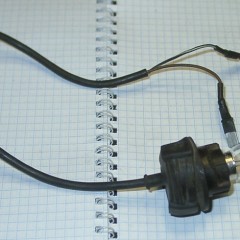Recommendations for installing solar panels in your home
Existing Mounting Options
First of all, let's talk about how you can install solar panels yourself at home. There are several installation methods, namely:
- On the roof of the house with a slope of not more than 40 degrees. In this case, you can either make a special supporting structure from profiles, or, if the angle of the roof is more than 30 degrees, install solar panels without an arm, as shown in the photo below (option 2).


- On the flat roof of the building. Under such conditions, it is necessary to make a special metal frame with an inclined plane for mounting solar panels at an angle relative to the roof.

- On the wall. In practice, this method of installing solar panels on the roof is extremely rare. As in other cases, first a reliable frame structure is created, to which fastening is carried out. In this case, the batteries also need to be installed at an angle.

- In the ground on a special support in the form of a rod. This installation option can be used in regions with heavy snowfalls or if other installation options, except on poles, are not suitable.

- On the balcony or loggia. If you decide to install solar panels in your apartment yourself, then you can place them on the roof of the balcony or from the outside, as shown in the pictures below.


Most often, the first and second installation options are used at home. Now we will consider how to do the installation of solar panels with your own hands and what nuances you need to consider in order to do everything right.
Installation steps
So, before you install panels on the roof of an apartment building yourself, you must make sure of the following:
- The roof is able to withstand loads from the weight of the frame structure and the battery itself that you are about to install.
- Nearby objects will not cast a shadow on the surface of the batteries. Firstly, insufficient solar energy will reduce the efficiency of the devices, and secondly, some panels will not work at all if at least a small part of the surface shadows. Well, and thirdly, the solar battery can generally fail in this case due to the so-called "stray currents".
- Gusts of wind will not be a threat to the autonomous system (the installed structure should not be a sailboat).
- You can easily take care of the surface of the solar panels (wash them from dirt, remove snow, etc.).


Based on all these points, the first thing to do is to choose the right one yourself, where it is better to install the system on the roof of the house. It should immediately be noted that the system should be located on the south side of the building, since it is this area that accounts for the maximum amount of solar energy in daylight hours.
After you decide where the panels (or collectors) will be placed, it is necessary to proceed to the assembly of the frame structure and its installation on the roof. Be sure to use only metal corners and profiles. It is not recommended to make a frame from a bar, because he will quickly lose his strength properties. It is best to use a square profile of 25 * 25 mm or a corner, but at this stage everything is purely individual - if you decide to install a large solar panel, the profile section should be an order of magnitude larger.
Special attention should be paid to the angle of inclination of the panels to the horizon plane, in other words, to the earth's surface. For each region, the conditions are slightly different, but usually in the spring it is recommended to install solar panels at an angle of 45 degrees, and closer to autumn 70-75. That is why it is necessary to think through the design of the frame in advance so that you can manually choose at what angle to install the system under the sun. Typically, the frame is made in the shape of a triangular prism and attached to the roof with bolts.
Immediately draw your attention to the fact that on a flat roof or on the ground, it is not necessary to carry out horizontal installation of panels. In winter, you will have to constantly remove snow from the surface, otherwise the system will not work.
Another no less important requirement is that there must be air space between the roof and the solar battery (this is relevant if you decide to install the panel without a frame on a flexible or metal tile). If there is no airspace, heat dissipation will deteriorate, which may subsequently disable the system in a short period of time! An exception is roofs made of slate or ondulin, which, due to the wavy structure of the roofing material, will independently provide an air approach.
Well, the last important point of installation - solar panels need to be mounted in a horizontal position (the long side along the house). If this rule is neglected, uneven heating of the upper and lower areas of the panel can occur, which will significantly reduce the efficiency of using an autonomous power supply system or heating a private house.
The installation procedure for the power supply system of the site on the masts and the wall you can in this video:
That's all I wanted to tell you about how to install solar panels for the home with your own hands! We hope that the provided instruction with photo reports and video tutorials was interesting and useful for you!
Also read:







